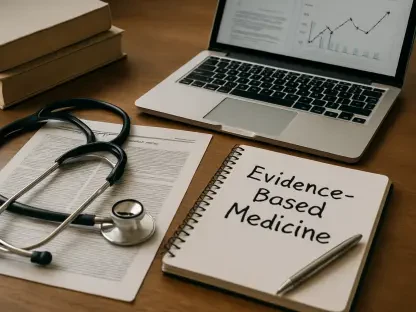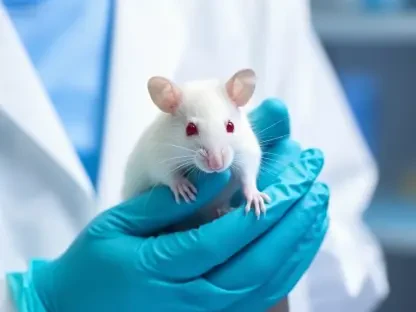The 1985 Salmonella outbreak in the United States is one of the most significant public health incidents in the nation’s history, triggered by contaminated milk from Hillfarm Dairy in Melrose Park, Illinois. This remarkable event exposed critical failures in food safety protocols and underscored the vulnerabilities in regulatory oversight during that period. As a result, it prompted a series of investigations that unraveled the causes and consequences of the outbreak, serving as a historical case study for understanding foodborne pathogen transmission and emergency response. This article explores the origins of the contamination, its impact on public health and legal frameworks, and the enduring lessons that continue to influence food safety practices today.
Origins of the Contamination
The Source of the Crisis
The origin of the Salmonella crisis was traced back to Hillfarm Dairy’s operation in Melrose Park, Illinois, where a severe oversight in milk processing led to this unprecedented outbreak. A critical flaw in the dairy’s technical operations allowed raw milk to mix with pasteurized milk, creating a contaminated product distributed across the country. Pasteurized milk is typically considered safe, as the pasteurization process kills harmful bacteria. However, when raw milk—which is a common carrier of pathogens like Salmonella—came into contact due to equipment malfunction, it reversed the safety achieved through pasteurization. The flaw, possibly stemming from a faulty valve, exemplifies the risks inherent in food processing and underscores the importance of meticulous monitoring and quality assurance in dairy operations to prevent such incidents.
Investigative Breakthroughs
The unfolding of the crisis instigated a complex investigation led by the U.S. Centers for Disease Control and Prevention, along with various local and state health agencies. These entities worked tirelessly to identify the lots of milk responsible for the outbreak, which were found to have expiration dates of April 17, 1985. Through extensive examination, investigators pinpointed equipment failures, revealing that Salmonella likely proliferated due to unsanitized threads on screw caps used in production machinery. Such findings emphasized the importance of proper sanitization and equipment maintenance in food production, as negligence in these areas can create breeding grounds for bacteria. The investigatory efforts also showcased the significance of coordinated approaches between public health agencies in tracing and containing foodborne outbreaks, ensuring that lessons from such historical crises are applied to modern practices.
Implications and Consequences
Health and Human Costs
The scale of the outbreak was staggering, with hundreds of thousands of individuals infected across the United States and resulting in at least 12 fatalities. This situation illuminated major deficiencies within the public health infrastructure and emergency preparedness strategies prevailing at the time. The outbreak highlighted the necessity of timely response mechanisms and effective communication channels to mitigate the spread of pathogens. Additionally, the human toll of the incident reinforced the crucial role of surveillance systems in the early detection of foodborne threats, thereby preventing widespread health impacts. The grim consequences of the 1985 outbreak underscored a dire need for strengthening the nation’s food safety protocols to better safeguard against similar tragedies in future scenarios, stressing the essential nature of preparedness for emergencies related to foodborne diseases.
Legal and Regulatory Fallout
In the wake of the outbreak, the Illinois Attorney General embarked on legal action against Jewel Companies Inc., the operator of Hillfarm Dairy, illuminating substantial flaws in existing regulatory frameworks. The investigation revealed that contaminated milk was disposed of in storm sewers, raising significant environmental concerns and spotlighting gaps in enforcing environmental protections. This legal endeavor exposed the inadequacies within regulatory systems responsible for monitoring food industry practices, creating a catalyst for reform and necessitating more stringent adherence to health guidelines. It underscored the accountability of corporate entities in maintaining public health standards and prompted discussions on the need for comprehensive legal policies to oversee food safety measures. Environmental implications also called attention to the broader impacts of safety breaches, urging reform in regulatory policies to ensure thorough compliance and prevent recurrence of such incidents.
Public Health Reflection and Lessons
Leadership and Accountability
The outbreak shone a spotlight on the critical importance of competent leadership within public health agencies and emphasized the need for professionals with relevant expertise in pivotal roles. The tardy response from the Illinois Public Health Department, exacerbated by its director being on vacation during the crisis, prompted administrative changes and underscored the emphasis on accountability. This incident highlighted that effective leadership is paramount to ensure a prompt and proficient response to emergencies, with the capability to mobilize resources and coordinate efforts required for crisis management. It called for a reevaluation of leadership protocols within public health organizations to guarantee that individuals in these positions possess the expertise and readiness to address public health emergencies swiftly and efficiently, minimizing damage and safeguarding community welfare.
Systemic Improvements
This historical episode accentuated the critical nature of continuous advancements in disease surveillance, facility design, and production process monitoring. Such systematic improvements are vital in preempting future outbreaks and bolstering public health defenses against foodborne pathogens. The outbreak served as an instructive lesson, highlighting the necessity for vigilance and adaptability in health policy frameworks, ensuring the integration of cutting-edge technologies and methodologies to detect and contain threats swiftly. It urged the industry to prioritize facility sanitation and implement rigorous checks throughout production stages to maintain product safety. As the landscape of foodborne illnesses evolves, this case study serves as a testament to the indispensable role of systemic enhancements in mitigating risks and fostering a robust, resilient infrastructure committed to ensuring consumer safety.
Future Directions in Food Safety
Evolving Challenges
In recent times, the complexity of foodborne illnesses continues to grow, presenting new challenges that demand adaptive and evolving regulatory systems. As pathogens emerge and mutate, health frameworks must innovate to combat these threats effectively. These evolving challenges highlight the importance of learning from historical food safety events to better prepare for current and future threats. The knowledge gained from past outbreaks propels the need for comprehensive research and policy reform, facilitating the development of responsive guidelines adept at addressing the multifaceted nature of foodborne diseases. The focus must shift towards integrating multidisciplinary approaches, embracing technological advancements, and ensuring regulations remain dynamic and responsive to new challenges, safeguarding public health and achieving pivotal breakthroughs in food safety.
Focused Solutions
The 1985 Salmonella outbreak remains a critical public health crisis, marking a pivotal event in the nation’s history. It was initiated by contaminated milk sourced from Hillfarm Dairy in Melrose Park, Illinois. This startling occurrence highlighted severe lapses in food safety protocols and demonstrated the deficiencies in regulatory oversight prevalent during that era. Consequently, it instigated a series of in-depth investigations that exposed the root causes and wide-reaching effects of the outbreak, providing a historical case study for comprehending how foodborne pathogens are transmitted and how emergency responses are orchestrated. This analysis delves into the origins of the contamination and its profound impact on public health and legal systems. Moreover, it addresses the lasting lessons learned, which continue to shape and influence contemporary food safety measures, ensuring greater vigilance in protecting public health against similar threats in the future.









